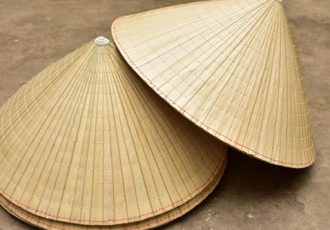Among Vietnamese women, the traditional outfit that has changed little through the ages is the “ao yem”. The “ao yem”, a specific outfit of the Vietnamese woman, is a breast cover with four straps (dai yem) of which two are tied behind the neck and the other two behind the back. The shape of the neck can vary: Round neck, neck in heart, open neck … For everyday work, in the countryside, it is usually brown. In the city, he is often white just like for the peasant at home. Pink, red, crimson yem are kept for festive days.
Ao Yem: a traditional Vietnamese outfit that is the symbol of femininity
In general, women make and dye their own “ao yem” and always keep them in discreet places. Yet it has become the emblem of love. The popular song “thuyen ai mac can len day, muon doi dai yem lam day keo thuyen” (my boat just hung a shoal, do you want to lend me the straps of your ao yem to pull it for good) is a kind of flirtation between boy and girl! Vietnamese women, discreet and delicate, do not like to speak too directly about their feelings, but to signify their love, they are no less explicit and intense, when they evoke their yem of which popular songs often speak.

Ao yem in everyday life
During ordinary work and occupations, men and women traditionally wear short jackets, with two pockets at the bottom, split or not on the sides, called ao canh in the north and ao ba ba in the south. Open on the front, they are provided with buttons, but women, to have less heat, have the habit of not buttoning it because they have the Yem underneath (which they also want to show by coquetry).
The ao yem for the festivals
On the occasion of festivals, the woman of Vietnam wears the “Ao dai” or the “Ao Tu than” (a looser garment, dark in color, consisting of 4 sides. The ao tu than is cut from 4 strips of fabrics. For the back, two widths of fabrics are sewn together. On the front, the buttonless strips are left free, or tied in a large knot.



